The Matrix Resurrections Movie Explained: Ending, Themes & Satire Analysed: An initially successful franchise is likely to sustain itself with mediocre follow-ups. Although this is not a given, it happens more often than not. Warner Bros. has inadvertently repeated the pattern with the new ‘Matrix’ film. And this was coming. Lana Wachowski, who created and directed the first installment with her sister, was reluctantly involved with the project. All this after WB decided to go ahead “with or without her”. It is no surprise, then, potshots are taken at them through the breaking of the fourth wall. ‘The Matrix’ franchise is undoubtedly a revolution in the sci-fi genre. The first film was able to engage a spectrum of the audience that was hitherto relegated to the margins. The complicated world of the Matrix gave rise to many conspiracy theories and became an indomitable part of pop culture.
The second and third weren’t that bad either. They came due to the volition of the original creators and added value to the cinematic world. ‘Matrix: Resurrections”, though, comes up some way short of matching its predecessors’ innovation and vibe. Neil Patrick Harris’ introduction as the chief antagonist, “The Analyst”, is hardly a match for previous villains. The meta element is heavily exploited to expand the unique landscape of the franchise. The execution is severely lacking in style and conception. The choreography of the action sets is weak; characters’ guns are designed not to shoot, but miss; and the film runs excessively long on account of its titillating nostalgia.
Related to The Matrix Resurrections Movie Explained – Nine Days Movie Explained: Ending, Themes & Free Will and The Human Condition Analysed
The disappointment, though, gives way to explanations of a few plot points that might have gone over one’s head. The film is complicated from the start and becomes even more so as it progresses. We have tried to collate those plot points that need explanation. Below is a heavily spoiler-laden analysis of ‘Resurrections’, so tread with caution. Happy reading!
The Matrix Resurrections SYNOPSIS & SUMMARY:
The new installment introduces a whole team of new characters, led by Bugs, formerly plugged into the Matrix, and who also saw the true avatar of Neo, not the old man. The team is working with the old team after retrieving modal Morpheus from a simulation. Their mission is to wake up Neo by finding Thomas Andersson and making him understand that his reality is just another simulation. In doing so, the team and Neo must come up against a vaguely powerful new enemy in the form of The Analyst, to save Trinity and return back to the place where they belong.
Why is Thomas Andersson in a Matrix simulation?
This is an important one. Answering this question will also lead us to answer the question: why is Neo needed again? After the events of The Matrix Revolutions, the machines understand that it was because of Neo’s powers that the Matrix assumed its ultimate state. To preserve him, he was kept in a pod by them. But, for the fear of the safety of the simulation, he is being fed blue pills.
The Analyst ensures that Thomas Anderson never discovers that he is Neo, giving him those pills as medication. But once Bugs and the modal Morpheus are able to locate him and he stops taking the pills, Anderson moves closer to his real identity. The Matrix’s reboot by the Analyst has divested control from original stakeholders. He controls every aspect of it and also the programs that were part of it. This is exactly why Neo is needed again: to tilt the balance scales in favor of the Matrix, again.
What is the “Deja vu” cat?
The black cat. Oh, the black cat. At first, it seems quite insignificant. But as the patterns repeat and emerge, the cat’s importance becomes apparent. Neo’s episodes and his therapy sessions are not the first time the cat is seen in the franchise. Remember Hotel Ambush when Neo sees the cat shaking and saying, “deja vu”? It is no coincidence that the Analyst tends to keep close to the cat. In almost every major scene involving a new order in the simulation, the cat is at the forefront. The cat is the fail-safe, or the reset button if you will.
Why does Agent Smith help Neo and Trinity escape?
Smith’s resurrected form was brought back for a singular purpose: keep track of Neo. The rebooted Matrix sees Jonathan Groff’s avatar embody the supervillain, who is clearly a fan favorite. To understand Smith’s actions, it is important to harken back to my favorite place for understanding the universe, ‘The Office’. Remember the ‘Koi Pond’ episode and Dwight’s enigmatic theory about enemies and friends? Here, let us help you. “Jim is my enemy. But it turns out that Jim is also his own worst enemy. And the enemy of my enemy is my friend. So Jim is actually my friend. But, because he is his own worst enemy, the enemy of my friend is my enemy, so actually, Jim is my enemy..”
Smith’s character and other exile programs that were able to survive the purge, retain traces of their memories. The feelings, emotions are all intact. But, the added element that forces Smith to help Neo after he is defeated (again), is the control The Analyst has over him. The swashbuckling style that he had in the first few installments is reduced to obedience in becoming a guard dog. Smith is at loggerheads with Neo, naturally; but, he also harbors hatred towards Analyst. Not only does the evil incarnate control programs, but also has completely redesigned the Matrix. This forces him to forge the “unexpected alliance” with Neo that ends with the film.
Also, Read – Dune (2021) Movie Explained: Ending, Themes, & Colonial Invasion And The Determinism Of Fate Analysed
Why did The Analyst plan to resurrect Neo and Trinity?
In order to answer this question, one needs to revisit the ending of The Matrix Revolutions. In the third film of the franchise, Neo makes a pact for the survival of both humanity and the machines in exchange for bringing Agent Smith – who was a threat to the two, down. After winning his fight with Smith, Neo is taken to Machine City where the subsequent events in The Matrix Resurrections take place 60 years later.
This is because a program named ‘The Analyst’ was in the same vicinity when Neo sacrificed his life. When all the programs were later faced with a threat after the Civil War broke out, The Analyst conjured a new version of the Matrix by uniting the energies possessed by both neo and Trinity. So basically, to resurrect the Matrix after the humans and machines went their way, The Analyst resurrected Neo and Trinity as new versions of themselves for the new Matrix to function according to his evil genius.
The Matrix Resurrections Movie Themes Explained:
Identity, Technology, and the Nature of Reality
Matrix’s forward-looking thematic structure is an exciting way to speculate about the future. Computers and machine learning became prominent avenues of exploration for the Wachowskis back in 1999. The progressive recreation of the franchise core has resulted in the newest installment dwelling heavily on notions of virtual reality and the boundaries between the reign of man and machine. Our world of NFTs and virtual real estate is becoming crazier by the day. The imminent metaverse presents interesting and complex times ahead. The confluence of the two worlds is a dangerous, albeit probable outcome of advancements in the last few years.
‘Resurrections’ does not align itself with a singular worldview. The outlook is grounded and innately broad-minded to eventually leave the coming reality to the choices we make. Neo’s incredible act of stopping warring machine factions was one that transformed the landscape of the matrix. Will this happen with us? Only time and our choices will tell.
Franchise Filmmaking Satire
The business side of cinema is not discussed as often as it should be. WB pushed to expand the franchise; creators refused; the giants used extortion-like techniques; the creators budged. If not for the Wachowskis reinvention of themes, ‘Resurrections’ would not be relevant.
An intelligent realignment with the present makes sure that populist sentiment around the subjects is not hurt. A measured approach is a key to impeding the horribleness of films like ‘Godfather 3’ repeating themselves. Lana makes her feelings about the new film clear through the breaking of the fourth wall. The little segment in Anderson’s world when discussing the new Matrix game is a genius move. ‘Matrix 4’, as the new game in development is called, is her satirical take on franchise filmmaking.
Trans-politics in the Matrix
The Wachowskis have done a sincere job of translating gender elements of their lives into the ‘Matrix’ franchise. The binary classification of characters and perspectives has been drastically altered. The closeted Wachowskis were able to mold their gender beliefs into the storytelling in such a way that it remains relevant even today.
Trans subtext is delicately fashioned by the creators keeping well in mind the adverse reactions it might get. Most characters sport androgynous looks. The dichotomy between the two genders existing inside us and the constant struggle serves as the spiritual inspiration in the Matrix. It is not about becoming “the One”: it is about being one, whole in oneself.
Rebellion/Freedom vis-a-vis Balance of Power
Despite how undercooked I found the film, Wachowski creates a compelling thematic tone, led by this powerful film trope. Agent Smith’s resurrection is probably the most pivotal switch in setting the balance of power in motion. The exile programs and Neo refamiliarized their old rivalry but at the same time, forged a new form of alliance.
The dictatorial control of the Analyst over the Matrix did not sit well with its entrants. The exciting fabric of storytelling drives towards this overarching theme, something that does not seem to be lucid in the early hours of the runtime. In retrospect, this is probably the film’s strongest point, amidst the half-hearted execution.
The Matrix Resurrections Movie Ending Explained:
Priyanka Chopra’s Sati gets the ball rolling in terms of an epic ending. She plans an elaborate heist-like plan to free Trinity, despite Niobe’s persistent efforts to stop them, while Neo and co. do to Trinity what Bugs did to Neo. The cafe becomes the centerpiece in the climactic ending where Trinity, Neo, Smith, and the Analyst all convalesce.
Trinity must decide to leave the Matrix of her own volition in order to free herself. When push comes to shove, Neo and Trinity’s leap of faith after Smith helps them saves their life. How is the latter able to harness the former’s powers? The power of love. Their re-connection allows, as was prophecized, them to overcome any hurdle together. In fact, after all, the One was one whole of one body.
Does The Matrix Resurrections Movie have an end credit scene? What does it mean?
Yes, The Matrix Resurrections does have an end-credit sequence. There’s no mid-credit scene, but once the credits roll all the way through the last production logos, we are blessed with another scene for audiences used to waiting it out in the Marvel movies.
However, if you are wishing to see exclusive footage for a supposed The Matrix 5, you will be disappointed. In a way, the sequence sort of harkens back to what this extra footage meant back when it was in fashion for the first time. Like the likes of Ferris Bueller’s Day Out.
Once the credits have rolled the scene cuts back to Deus Machina, the Warner Bros.-owned video game developer company Neo was working for. The people discuss what the sequels should be about. Things like “Face reality. Movies are dead. Games are dead,” a developer says. “Narrative is dead,” are said before one of them suggests work on why cat videos work on the internet.
The name “The Catrix” is proposed for the need for viral sensation and then we cut to black.


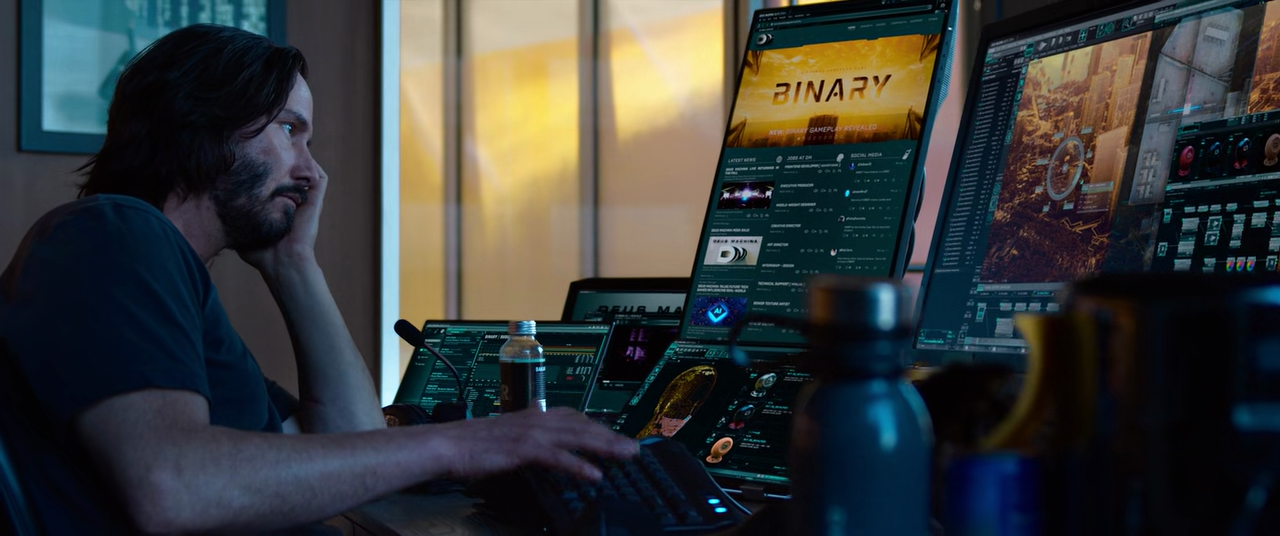
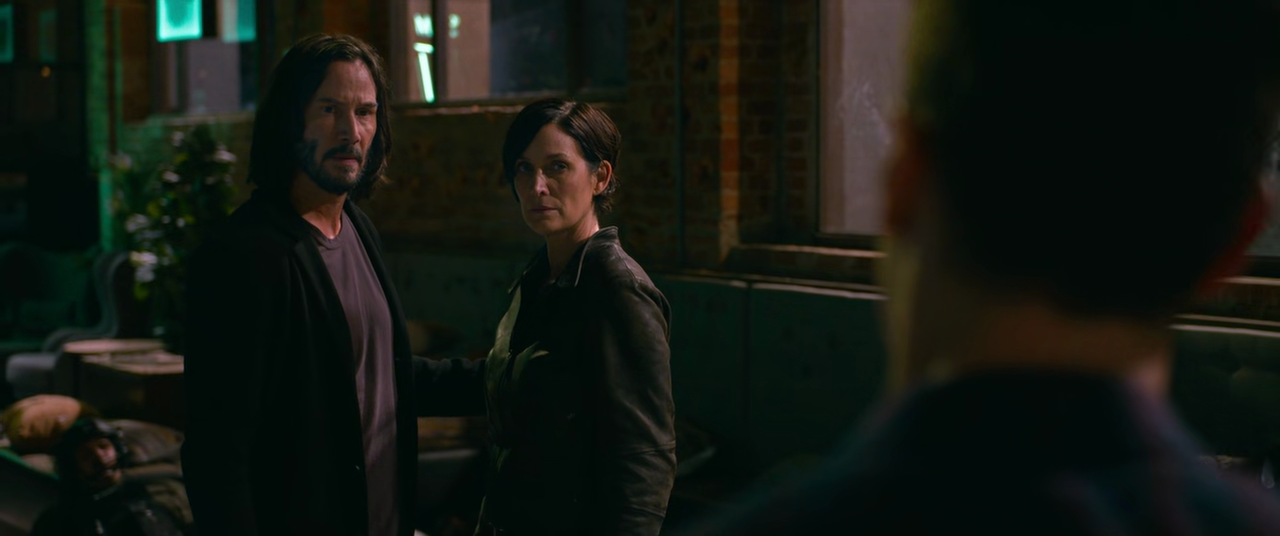
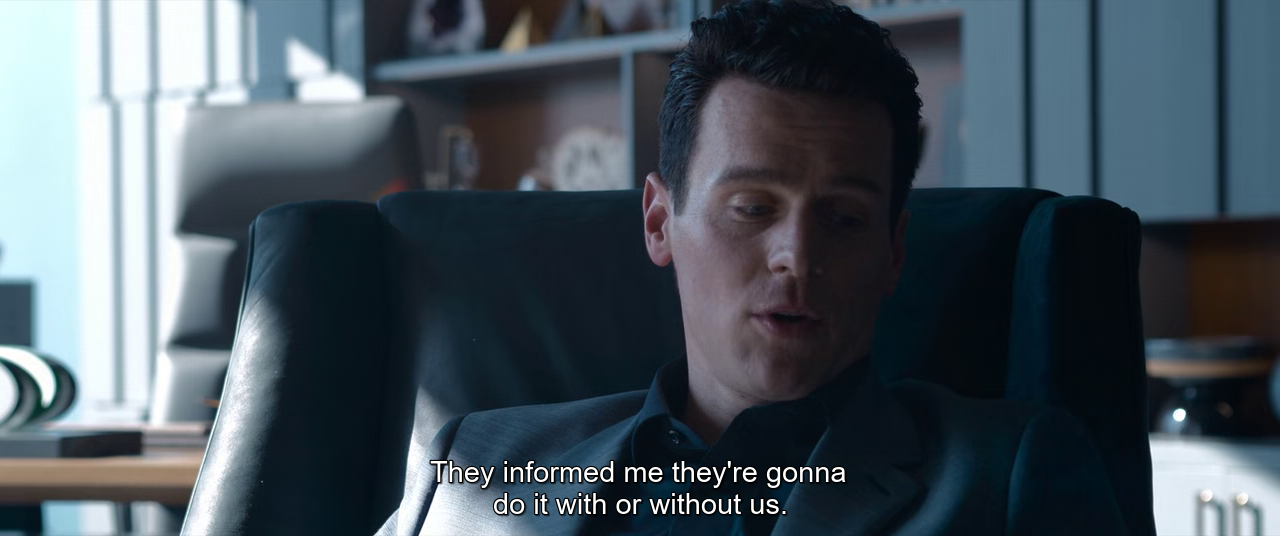
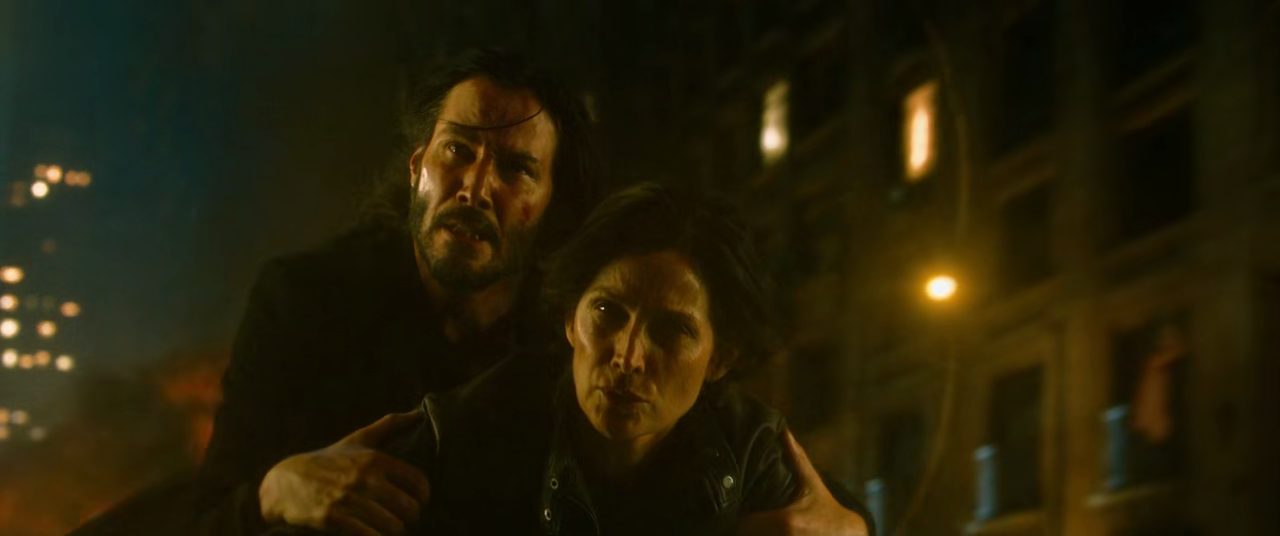

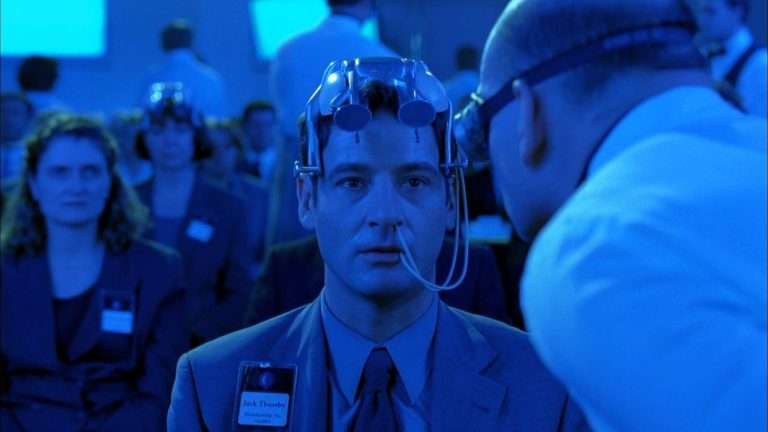
![How to Kill a Cloud [2021]: ‘Locarno’ Review – The Quandaries of a Rainmaker](https://79468c92.delivery.rocketcdn.me/wp-content/uploads/2021/08/How-to-Kill-a-Cloud-2021-768x512.jpg)


![The Lost Daughter [2021] Review: Maggie Gyllenhaal’s Directorial Debut is a Stunning Showcase of Olivia Colman’s Mastery](https://79468c92.delivery.rocketcdn.me/wp-content/uploads/2022/01/The-Lost-Daughter-1-768x512.jpg)
